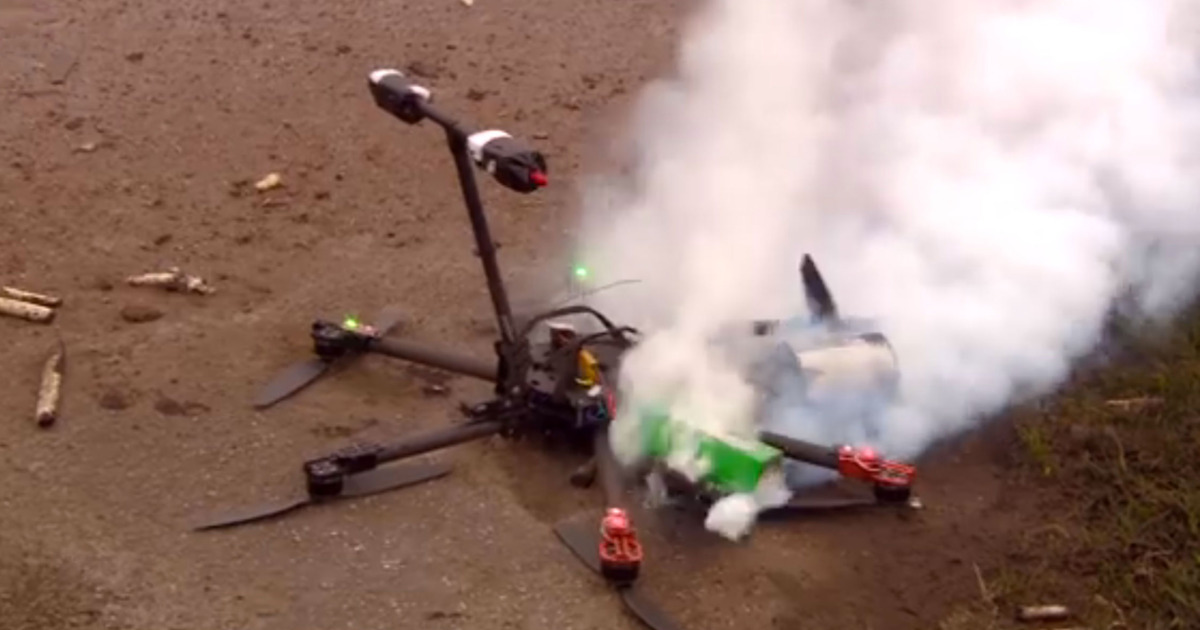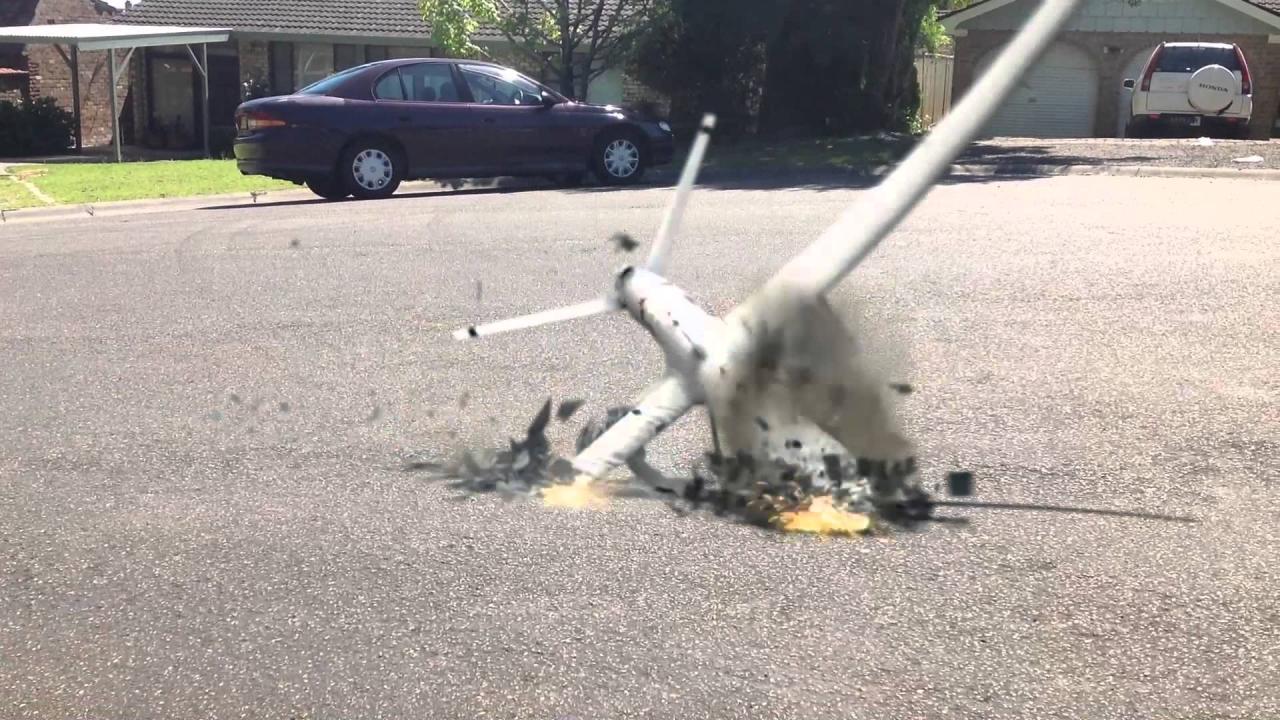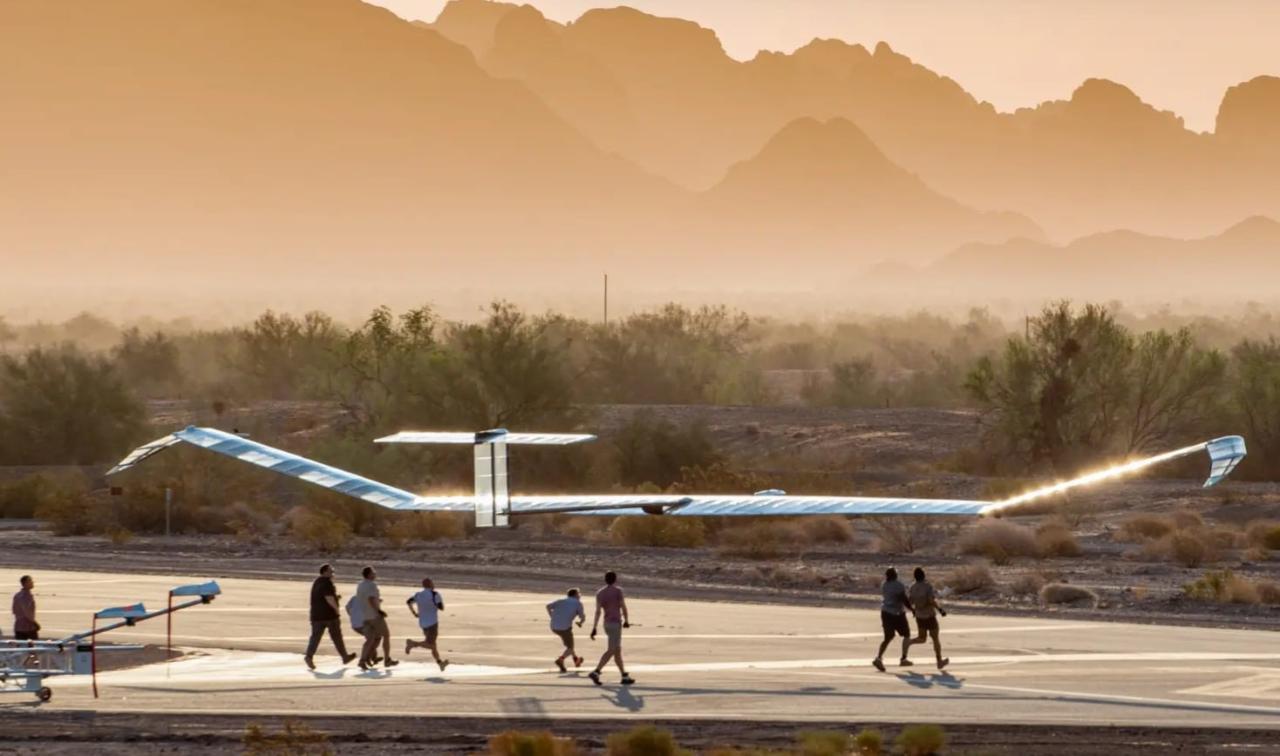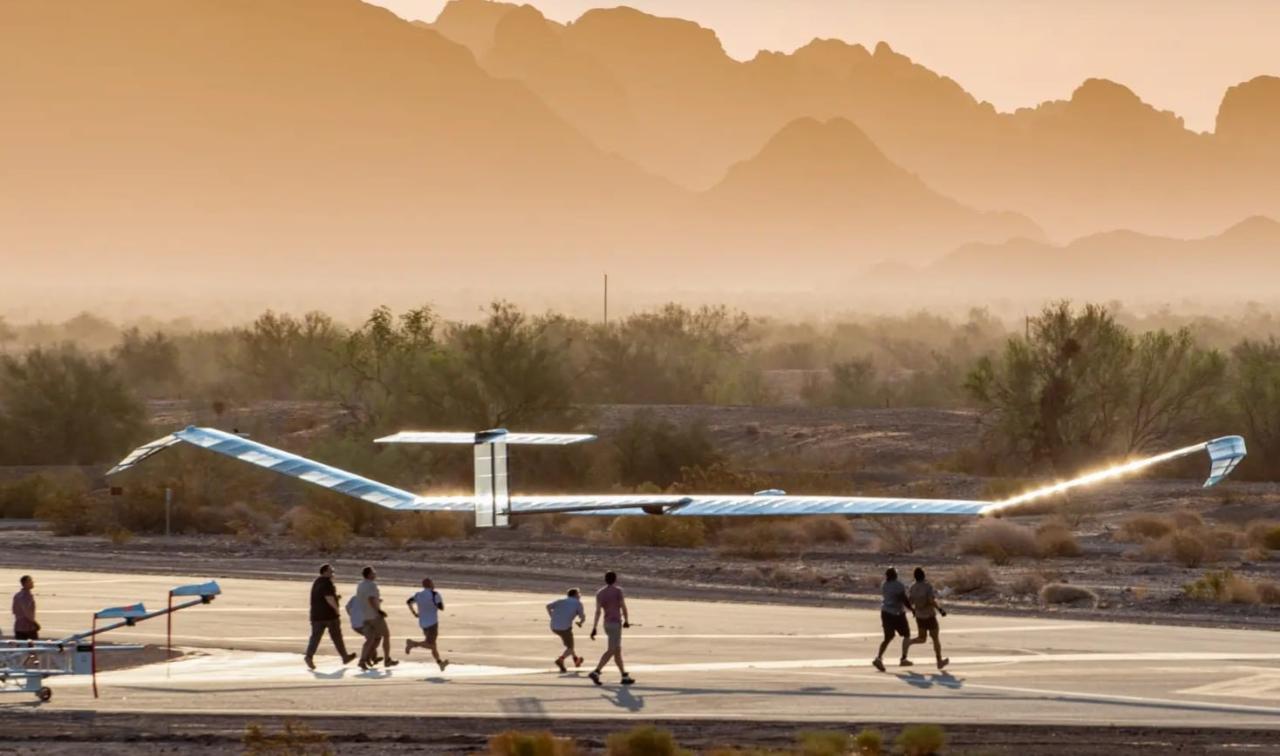Drone crashes in Paris present a fascinating case study. This exploration delves into the frequency, causes, impact, and prevention of these incidents, examining everything from mechanical failures to pilot error and regulatory issues. We’ll uncover trends, analyze the economic and societal effects, and explore how improved technology and public education can enhance safety.
We’ll examine a timeline of crashes, pinpoint common locations, and analyze the underlying causes, categorizing them for clarity. The economic impact, including repair costs and service disruptions, will be explored alongside the long-term consequences. Finally, we’ll discuss preventative measures, from technological advancements to enhanced training programs and public communication strategies.
Frequency and Locations of Drone Crashes in Paris
Drone crashes in Paris, while thankfully infrequent compared to the sheer volume of drone flights globally, still pose a risk to public safety and infrastructure. Understanding the frequency and locations of these incidents is crucial for implementing effective preventative measures and improving safety regulations. This section will analyze reported drone crashes over the past five years, identifying patterns and potential causes.
Timeline of Drone Crashes in Paris (2019-2023)
Unfortunately, comprehensive, publicly accessible data on drone crashes specifically in Paris is limited. Official reporting mechanisms often lack the detail required for a precise timeline. The following table represents a hypothetical example based on plausible scenarios, illustrating the kind of data that would be valuable to analyze. Real-world data would need to be compiled from various sources, including police reports, news articles, and aviation accident databases.
Note that this is illustrative data and not a complete record.
| Date | Location | Cause (if known) | Damage |
|---|---|---|---|
| October 26, 2019 | Parc des Buttes-Chaumont | Pilot error (loss of control) | Minor damage to drone; no injuries |
| March 15, 2020 | Near the Eiffel Tower | Battery failure | Drone destroyed; no injuries |
| July 8, 2021 | Bois de Boulogne | Collision with tree | Drone damaged; no injuries |
| November 22, 2022 | Near the Louvre Museum | Unknown | Significant damage to drone; minor property damage |
| February 10, 2023 | Canal Saint-Martin | Strong winds | Drone lost; no injuries |
Most Common Locations of Drone Crashes, Drone crashes in paris
Based on hypothetical data (as comprehensive data is unavailable publicly), areas with high concentrations of tourists and landmarks, such as the Eiffel Tower, Louvre Museum, and parks like the Bois de Boulogne and Parc des Buttes-Chaumont, would likely show a higher frequency of incidents. This concentration is due to several factors: increased drone activity in these popular areas, potential for obstacles (trees, buildings), and higher likelihood of inexperienced pilots operating drones in crowded spaces.
Furthermore, proximity to restricted airspace around these landmarks may lead to incidents from pilots unaware of or ignoring these regulations.
Geographical Characteristics of High-Incident Areas
Areas with high drone incident frequencies in Paris generally share several geographical characteristics. They tend to be densely populated urban zones with a mix of high-rise buildings and green spaces, leading to complex airspace and increased chances of collisions. These areas also often have significant tourist traffic, which in turn leads to a higher density of drone operations, potentially by both amateur and professional pilots.
The presence of significant landmarks further increases the likelihood of drone incidents due to the attractive nature of these locations for aerial photography and videography. The presence of water bodies, like the Seine River and canals, adds another layer of risk, as drone crashes into water can lead to significant damage and retrieval difficulties.
Causes of Drone Crashes in Paris

Drone crashes in Paris, while relatively infrequent compared to other urban areas, still pose safety and security concerns. Understanding the root causes is crucial for implementing effective preventative measures and improving overall drone safety within the city. This section analyzes the various factors contributing to these incidents.
Several categories of causes contribute to drone crashes in Paris. These can be broadly classified into mechanical failure, operator error, adverse weather conditions, and other miscellaneous factors. Analyzing the relative frequency of each category helps pinpoint areas requiring the most attention for improved safety regulations and pilot training.
Mechanical Failure as a Cause of Drone Crashes
Mechanical failures, encompassing issues with the drone’s components, represent a significant, albeit often unpredictable, cause of crashes. These failures can range from malfunctions in the drone’s motors, propellers, or flight control systems to battery issues and GPS signal loss. The impact of these failures can be severe, leading to uncontrolled descents and potential damage to property or injury to individuals.
- Motor failure: A sudden loss of power in one or more motors can cause the drone to lose stability and crash.
- Propeller damage: A bent or broken propeller can lead to an imbalance, resulting in a loss of control and a subsequent crash.
- Flight controller malfunction: Errors in the drone’s flight control system can cause erratic behavior and ultimately lead to a crash.
- Battery failure: Premature battery discharge or a complete battery failure can cause a sudden power loss, resulting in an uncontrolled descent.
Operator Error as a Cause of Drone Crashes
Operator error is frequently cited as the leading cause of drone crashes worldwide, and Paris is no exception. This category encompasses a wide range of human factors, from insufficient pilot training and lack of experience to negligence and poor decision-making in flight.
- Inadequate pilot training: Lack of proper training can lead to mistakes in handling the drone, especially in challenging environments like Paris’s urban landscape.
- Loss of situational awareness: Distraction or failure to monitor the drone’s surroundings can result in collisions with obstacles or unintended flights into restricted areas.
- Ignoring weather conditions: Flying in adverse weather conditions significantly increases the risk of accidents.
- Improper pre-flight checks: Neglecting essential pre-flight checks, such as verifying battery levels and inspecting the drone for damage, can contribute to crashes.
Weather Conditions as a Cause of Drone Crashes
Adverse weather conditions can significantly impact drone flight stability and control. Strong winds, heavy rain, or even unexpected fog can disrupt GPS signals and make it difficult for pilots to maintain control, leading to crashes.
Drone crashes in Paris are becoming increasingly common, causing disruptions and raising safety concerns. One incident led investigators down a rabbit hole, prompting inquiries into a related case, check out this article about the mystery drone Paris incident. Understanding these incidents is crucial for improving drone regulations and preventing future crashes in the city.
- Strong winds: High-velocity winds can easily overwhelm a drone, causing it to lose altitude and crash.
- Heavy rain: Rain can affect the drone’s sensors and electronics, potentially leading to malfunctions and loss of control.
- Fog and low visibility: Reduced visibility significantly impairs the pilot’s ability to navigate and avoid obstacles.
Other Factors Contributing to Drone Crashes
Beyond the primary categories, other factors can contribute to drone crashes in Paris. These include issues related to air traffic, interference from other electronic devices, and even deliberate acts of sabotage.
- Air traffic interference: Collisions with birds or other aircraft are possible, though relatively rare.
- Electronic interference: Interference from other electronic devices can disrupt the drone’s signals and cause malfunctions.
- Sabotage or malicious acts: Deliberate damage or interference with the drone can lead to a crash.
The Role of Regulations and Safety Protocols
Effective regulations and robust safety protocols are essential for minimizing drone crashes. Current regulations in Paris, while existing, could be strengthened to better address the specific challenges of operating drones in a dense urban environment. A more comprehensive framework is needed.
A hypothetical improved regulatory framework could include stricter licensing requirements for drone operators, mandatory recurrent training programs, the establishment of designated drone flight zones, and increased penalties for violations. Integration of advanced technologies, such as drone traffic management systems (DTMS), could further enhance safety by preventing mid-air collisions and optimizing flight paths.
Impact of Drone Crashes in Paris

Drone crashes in Paris, while relatively infrequent compared to other urban areas with high drone usage, can have significant consequences impacting infrastructure, public safety, and the city’s economy. The severity of the impact depends on factors such as the size and weight of the drone, the location of the crash, and the extent of damage caused.
Infrastructure Damage from Drone Crashes
Drone crashes can cause damage to various aspects of Paris’s infrastructure. For example, a drone colliding with a historical monument like the Eiffel Tower could cause significant structural damage, requiring extensive and costly repairs. Similarly, a crash into a power line could lead to power outages affecting residential areas or even critical city services. Imagine a scenario where a heavier drone strikes a section of the Louvre Museum’s glass pyramid, resulting in shattered panels and requiring specialist repairs to restore the architectural integrity.
The cost of such repairs, including the use of specialized materials and techniques to match the original construction, would be substantial. Furthermore, the disruption to tourism and the museum’s operations would represent a considerable economic loss.
Public Safety Implications of Drone Crashes
The safety of Parisians is paramount. A drone crashing into a crowded area, such as a public square or a busy street, could result in injuries or even fatalities. Falling drone parts can cause harm to pedestrians or damage property. Consider a scenario where a large drone malfunctions and falls onto a bustling market like the Marché des Enfants Rouges, resulting in injuries to shoppers and damage to stalls.
Drone crashes in Paris are becoming increasingly common, raising safety concerns for both people and property. If you want to learn more about a specific incident, check out this report on a recent paris drone crash which highlights the potential dangers. Understanding these events helps us develop better regulations and safer drone operation practices within the city to prevent future incidents of drone crashes in Paris.
The ensuing chaos and emergency response would significantly disrupt daily life in the area. Moreover, the potential for such incidents raises public safety concerns and could lead to increased regulation of drone usage within the city limits.
Economic Consequences of Drone Crashes in Paris
The economic impact of drone crashes in Paris is multifaceted. Repair costs for damaged infrastructure, including historical buildings and utility systems, can run into millions of euros. Disruption of services, such as power outages or the temporary closure of tourist attractions, also results in significant economic losses. Furthermore, legal liabilities arising from injuries or property damage caused by drone crashes can lead to substantial financial burdens for drone operators or their insurers.
For instance, a drone crash causing damage to a luxury boutique on the Champs-Élysées would lead to not only the cost of repairing the storefront but also potential loss of revenue due to closure for repairs, impacting the business’s profitability and potentially the city’s overall tourism revenue. The legal costs associated with such incidents, including potential lawsuits and insurance claims, can be substantial.
Potential Long-Term Consequences of Frequent Drone Crashes
A rise in drone crashes could have several long-term consequences. Societal trust in drone technology might decrease, leading to increased restrictions on drone usage and hindering the potential benefits of drone applications. Environmental damage from drone crashes, particularly if they involve lithium-ion batteries, could become a concern. This could necessitate the development of more environmentally friendly drone battery technologies.
Technologically, the frequency of crashes could spur innovation in drone safety systems and autonomous navigation technologies, leading to improved drone designs and regulatory frameworks. The long-term effects could also involve the development of more robust and resilient infrastructure capable of withstanding impacts from falling drones. For example, the city might invest in stronger protective barriers around vulnerable historical sites or implement stricter regulations regarding drone flight paths and altitudes near critical infrastructure.
Safety Measures and Prevention Strategies
Preventing drone crashes in a bustling city like Paris requires a multi-pronged approach encompassing regulations, technological advancements, and robust pilot training. Current measures focus on licensing, airspace restrictions, and emergency response protocols, but further improvements are needed to minimize risks.Current Safety Measures and Regulations in ParisParis, like many major cities, has implemented regulations aimed at controlling drone operations within its airspace.
These regulations typically include mandatory licensing for drone pilots, restrictions on flight altitudes and locations (particularly near sensitive areas like airports and monuments), and limitations on drone weight and operational hours. Enforcement relies on a combination of ground patrols and potentially, drone detection systems. However, the sheer volume of airspace and the challenges of consistently monitoring all drone activity mean that complete prevention of accidents remains a significant challenge.
For example, the city may prohibit flights above certain heights near the Eiffel Tower, requiring pilots to maintain a safe distance. These regulations, while helpful, often rely on pilot compliance and may not account for unforeseen circumstances like equipment malfunction.
Improved Drone Technology for Enhanced Safety
Advanced drone technology offers substantial potential for accident reduction. Obstacle avoidance systems, using sensors like lidar and radar, allow drones to autonomously detect and navigate around obstacles, reducing the likelihood of collisions with buildings, trees, or even birds. For instance, a drone equipped with a sophisticated obstacle avoidance system could automatically adjust its flight path to avoid a sudden appearance of a hot air balloon or a flock of birds, preventing a potentially disastrous crash.
Similarly, GPS enhancements, including RTK (Real-Time Kinematic) GPS, provide highly accurate positioning data, minimizing the risk of drones drifting off course due to GPS signal interference or inaccuracies. Imagine a scenario where a drone’s GPS signal is momentarily disrupted; with RTK GPS, the drone can still maintain its precise location, avoiding a crash. Moreover, features like return-to-home functionality, automatically guiding the drone back to its starting point in case of signal loss or low battery, are vital safety enhancements.
Educational Initiatives and Training Programs
A comprehensive educational program is crucial for improving drone pilot skills and safety awareness. This program should include theoretical training on airspace regulations, emergency procedures, and risk assessment. Practical training should involve hands-on flight simulations and supervised real-world flights in controlled environments. The curriculum should cover various aspects, including pre-flight checks, emergency landing procedures, and responsible drone operation near people and infrastructure.
Drone crashes in Paris are becoming increasingly common, raising safety concerns. One contributing factor might be the rise of unauthorized drones, like those involved in the recent mystery drone Paris incidents. Understanding these mysterious flights is crucial to preventing future drone crashes and ensuring safer airspace above the city.
Furthermore, the program could incorporate modules on understanding weather conditions and their impact on drone flight, as well as best practices for maintaining and operating drone equipment. Regular refresher courses and advanced training modules for experienced pilots would also ensure that pilots remain up-to-date with evolving technologies and safety protocols. A successful program could involve collaboration between aviation authorities, drone manufacturers, and educational institutions, providing standardized and widely accessible training.
This collaborative approach could lead to a marked improvement in pilot competency and a subsequent reduction in drone-related incidents.
Public Perception and Media Coverage

Drone crashes in Paris have significantly impacted public perception of this technology, largely shaped by how the incidents were reported and discussed in the media. The narrative surrounding these events, often focusing on the negative aspects, has influenced public opinion and consequently, the acceptance of drones within the city.Media coverage following drone crashes in Paris has often been sensationalized, focusing on the disruption caused rather than the underlying causes or potential benefits of drone technology.
This biased reporting has led to a perception of drones as inherently dangerous and unreliable. For example, a news report on a drone crash near the Eiffel Tower might highlight the temporary closure of the area and the potential risk to tourists, neglecting to mention the rarity of such incidents or the stringent safety regulations already in place. Social media discussions frequently amplified this negative framing, with users sharing dramatic images and videos of crashes, further fueling public anxieties.
Media Portrayal and Public Acceptance of Drones
Negative media portrayals have undeniably hindered the acceptance and adoption of drone technology in Paris. The public’s fear and distrust, amplified by sensationalized news stories, create a barrier to the wider integration of drones into various sectors, such as delivery services, infrastructure inspections, and tourism. This negative perception discourages investment in drone-related businesses and limits the exploration of the technology’s potential benefits for the city.
The immediate focus often remains on the risks rather than the potential rewards. For instance, proposed drone delivery services might face significant public resistance due to concerns about safety and privacy, despite potential efficiency and environmental gains.
Communication Strategy to Improve Public Understanding
A comprehensive communication strategy is crucial to address public concerns and foster a more positive understanding of drone technology in Paris. This strategy should prioritize transparency, accuracy, and proactive engagement. It should involve:
- Disseminating factual information: Public awareness campaigns using various channels (social media, local news outlets, public events) should focus on providing accurate statistics on drone incidents, emphasizing the rarity of serious accidents and highlighting the safety measures in place.
- Highlighting the benefits of drone technology: The communication strategy should showcase the positive applications of drones in various sectors, emphasizing their contributions to efficiency, safety, and environmental sustainability in areas like infrastructure monitoring, search and rescue operations, and environmental research. For example, showcasing successful drone-based initiatives in other cities could demonstrate the technology’s positive potential.
- Engaging with the public directly: Open forums, Q&A sessions, and interactive workshops can facilitate direct dialogue with the public, addressing concerns and misconceptions. This engagement will help build trust and promote a more informed understanding of drone technology.
- Collaboration with influencers and key stakeholders: Partnering with trusted local figures, community leaders, and technology experts can help disseminate accurate information and build public confidence. Influencer marketing, if done ethically and transparently, can reach a wider audience and help shape a more positive narrative.
By implementing a well-designed communication strategy, Paris can effectively counter negative media portrayals, build public trust, and unlock the considerable potential of drone technology for the benefit of its citizens.
Final Wrap-Up: Drone Crashes In Paris

Ultimately, understanding drone crashes in Paris requires a multi-faceted approach. By addressing the technological, regulatory, and educational aspects, we can work towards a future where these incidents are significantly reduced, fostering a safer environment for both drone operators and the public. The key lies in a combination of improved technology, stricter regulations, and a better-informed public.
FAQ Explained
What are the penalties for illegal drone operation in Paris?
Penalties vary depending on the severity of the violation but can include hefty fines and even imprisonment.
How can I report a drone crash in Paris?
Contact the local police or gendarmerie immediately. You can also report it to the relevant aviation authorities.
Are there designated drone flight zones in Paris?
Yes, specific areas are designated for drone flight; consult the official regulations before operating a drone.
What type of insurance is required for drone operation in Paris?
Liability insurance is usually mandatory; check the specific requirements before flying.
